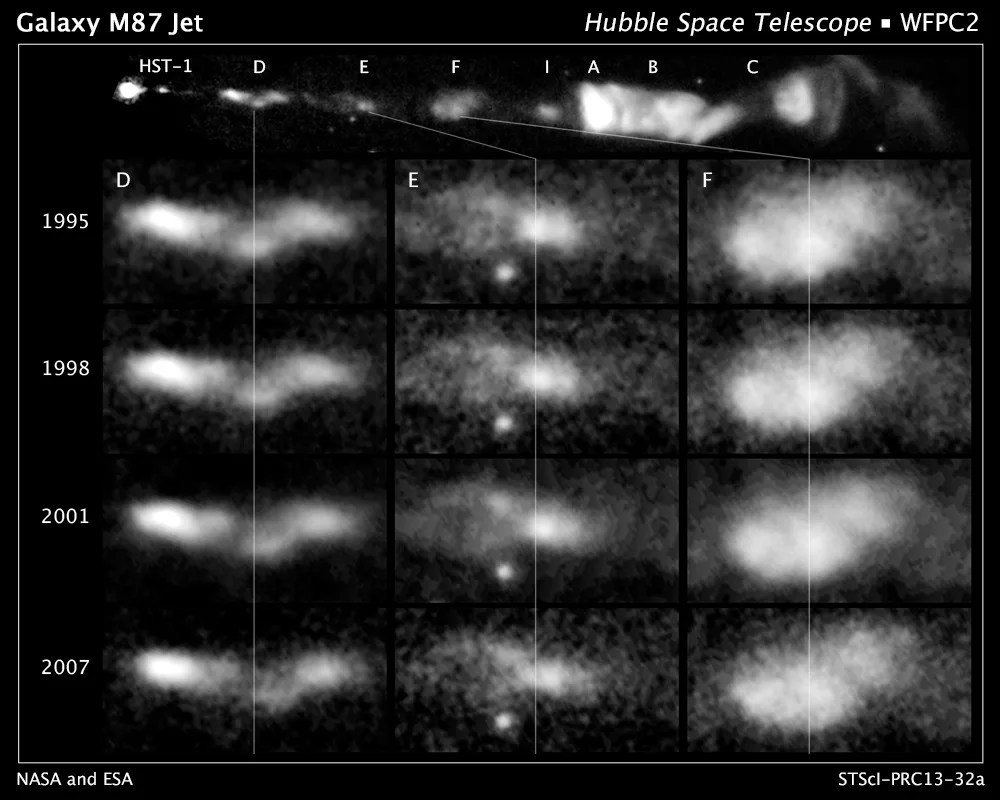2 min read

More than thirteen years of observations from NASA's Hubble Space Telescope have allowed astronomers to assemble time-lapse movies of a 5,000-light-year-long jet of superheated gas being ejected from a supermassive black hole in the center of the giant elliptical galaxy M87. This image captures moments over the thirteen year history.
The movies promise to give astronomers a better understanding of how active black holes shape galaxy evolution. While matter drawn completely into a black hole cannot escape its enormous gravitational pull, most infalling material drawn toward it first joins an orbiting region known as an accretion disk encircling the black hole. Magnetic fields surrounding the black hole are thought to entrain some of this ionized gas, ejecting it as very high-velocity jets.
The Hubble movies reveal for the first time that the jet's river of plasma travels in a spiral motion. This motion is considered strong evidence that the plasma may be traveling along a magnetic field, which the team thinks is coiled like a helix. The magnetic field is believed to arise from a spinning accretion disk of material around a black hole. Although the magnetic field cannot be seen, its presence is inferred by the confinement of the jet along a narrow cone emanating from the black hole.
M87 resides at the center of the neighboring Virgo cluster of roughly 2,000 galaxies, located 50 million light-years away. The galaxy's monster black hole is several billion times more massive than our Sun.
Credit: NASA, ESA, E. Meyer, W. Sparks, J. Biretta, J. Anderson, S.T. Sohn, and R. van der Marel (STScI), C. Norman (Johns Hopkins University), and M. Nakamura (Academia Sinica)
View associated NASA press release at: http://www.nasa.gov/press/2013/august/astronomers-use-hubble-images-for-movies-featuring-space-slinky/
View associated video at http://www.youtube.com/watch?v=6qr_0K7UPas







